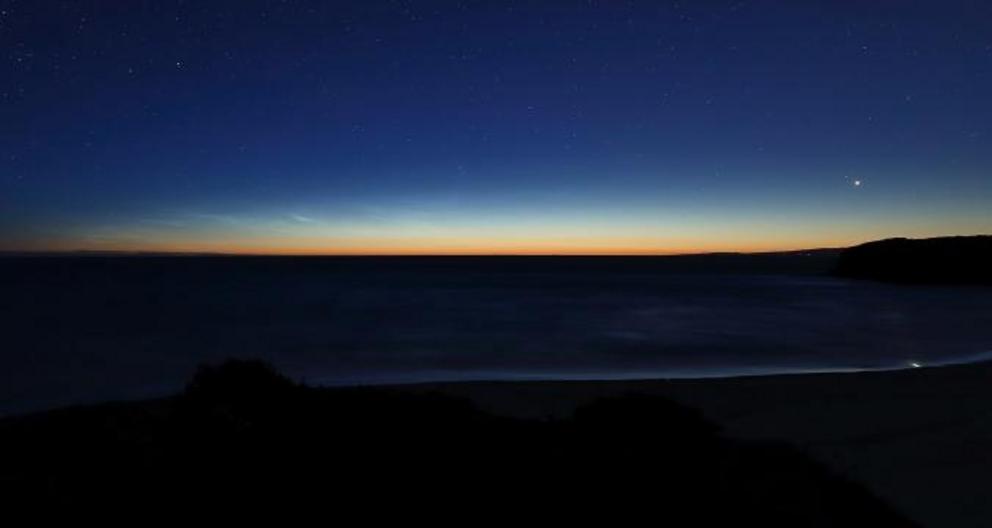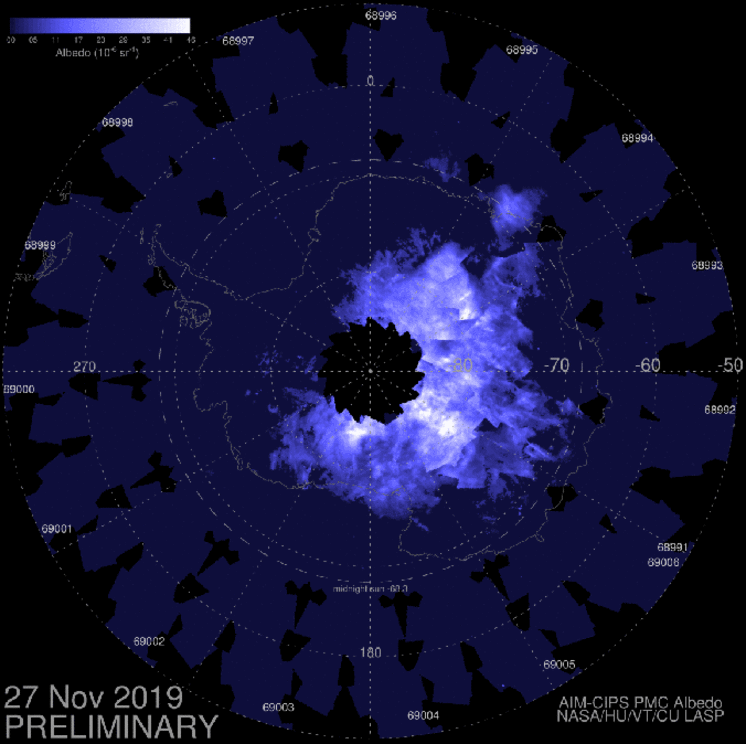Planetary wave supercharges southern noctilucent clouds
“This is a clear sign of planetary wave activity,” says AIM principal investigator James Russell of Hampton University, which manages the Aeronomy of Ice in the Mesosphere mission for NASA.
Planetary waves are enormous ripples of temperature and pressure that form in Earth’s atmosphere in response to Coriolis forces. In this case, a 5-day planetary wave is boosting noctilucent clouds over Antarctica and causing them to spin outward to latitudes where NLCs are rarely seen.
On Dec. 1st, Mirko Harnisch saw the clouds from Dunedin, New Zealand. “I was enjoying the late-evening sky over the Southern Ocean just after 11 pm local time when these wispy blue-ish clouds appeared,” says Harnisch. “They looked like noctilucent clouds, which would make this a rare sighting for my latitude of 45S.”

Indeed, very rare. Spaceweather.com has been receiving images of NLCs for more than 20 years. This is the first-ever submission from New Zealand.
Noctilucent clouds over Antarctica itself are nothing unusual. They form every year around this time when the first wisps of summertime water vapor rise to the top of Earth’s atmosphere. Molecules of H2O adhere to specks of meteor smoke, forming ice crystals 83 km above Earth’s surface.
But these NLCs are different. They’re unusually strong and congregated in a coherent spinning mass.
“The planetary wave is responsible,” says AIM science team member Lynn Harvey of the University of Colorado’s Laboratory for Atmospheric and Space Physics (LASP). “It is concentrating a mass of cold water vapor in the mesosphere and causing it to pinwheel counterclockwise around the South Pole.”
For the rest of this article please go to source link below.

